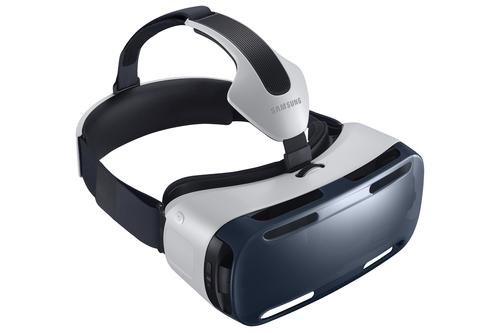Op-Ed: Phone-based VR Is Dead, Long Live VR
Google and Samsung's discontinuation of their phone-based VR headsets heralds both the end of an era and an evolution in VR.
October 28, 2019

|
The Gear VR was the face of smartphone-based VR. (Image source: Samsung) |
It's the end of an era for virtual reality enthusiasts.
Google has officially announced that it is ending its support of Daydream – its Android-based platform for mobile VR. Google's newest flagship phone, the Pixel 4, won't be compatible with Daydream and Google is also discontinuing its Daydream View headset. This news from Google comes only weeks after Samsung announced it would be discontinuing its Samsung Gear VR headset for phone-based VR. Facebook-owned Oculus will also be ceasing support for the Gear VR.
With the loss of its two major products, the days of smartphone-based VR are essentially over. But let's face it, it's no big loss. Smartphones are great for a lot of things, but what they've never been great at is acting as both the screens and processors for VR. While phone-based VR was an interesting idea to bring awareness to casual consumers, it didn't deliver on a lot of fronts. With issues including battery drain, poor resolution, a lack of compelling content – not to mention some far less than ideal form factors (looking at you Google Cardboard), phone-based VR presented a user experience that left a lot to the imagination.
Google echoed these issues in an official statement released to Engadget. The company cited poor consumer and developer adoption as well as issues with the overall user experience.
“We saw a lot of potential in smartphone VR,” a Google spokesperson said. “...But over time we noticed some clear limitations constraining smartphone VR from being a viable long-term solution. Most notably, asking people to put their phone in a headset and lose access to the apps they use throughout the day causes immense friction.”
Google has said going forward it will invest more in augmented reality technologies such as AR functionality in Google Maps. On the enterprise end this suggests the company also still has faith in its Google Glass Enterprise Edition AR headset.
Google has also said it will keep the Daydream app and corresponding app store alive for current users. However, this doesn't bode well for the longevity of headsets like Lenovo's Mirage Solo – one of the first truly standalone VR headets, but one that was built around Daydream.
The Samsung Gear VR faced similar criticisms. Last month at the Oculus Connect Developer Conference, Oculus CTO John Carmack delivered what he called a “eulogy” for the Gear VR during a keynote speech. Citing issues with battery life and a lack of use cases and content that kept users coming back, Carmack called the Gear VR a “missed opportunity.” He did however praise the headset for laying the groundwork for future mobile headsets – despite its design issues.
In reality the phone-based VR era may have done more harm to VR adoption than good. You'd be hard pressed to find anyone who said they were truly blown away by any phone-based VR experience. Casual consumers and even enterprises whose first entry into VR was via a smartphone headset might have dismissed the technology entirely after having a poor experience.
RELATED ARTICLES:
The good news is that the death of phone-based VR is coming just as both desktop-based and standalone VR headsets are entering a new era with lighter, more comfortable designs, resolutions up to and exceeding 4K, and inside-out tracking. Oculus has already released the Oculus Quest, a standalone headset that makes an excellent upgrade from phone-based VR or as an entry point to new VR users. HTC also offers a consumer standalone headset in the form of its Vive Focus Plus.
The enterprise VR space is seeing more activity than ever. HTC's Vive Pro Eye is an enterprise-focused VR headset that also includes eye tracking functionality. HP has recently made big investments into the enterprise VR space, most notably with its Reverb headset.
Pico Interactive even has a standalone enterprise headset – the Pico G2 4K, that is capable of 4K video resolution. And VRgineers has a powerhouse of a headset in its XTAL, a 5K headset targeted strictly at enterprise applications.
Factor in as well that many of the VR headsets available today are still leveraging a good amount of last generation's tech under the hood. Qualcomm has been releasing versions of its Snapdragon chip that are optimized for standalone VR. And while the Snapdragon 835 has featured in several headsets, we've yet to see a headset with the latest Snapdragon 845 running it.
While some of may look back fondly on the days of phone-based VR, the road ahead looks much more exciting for the VR space. Products like the Gear VR and Daydream View were nice stepping stones to what we have today, but it won't be long until we look back and wonder why we bothered with phone-based VR at all.
Chris Wiltz is a Senior Editor at Design News covering emerging technologies including AI, VR/AR, blockchain, and robotics.
About the Author(s)
You May Also Like


.jpg?width=300&auto=webp&quality=80&disable=upscale)

